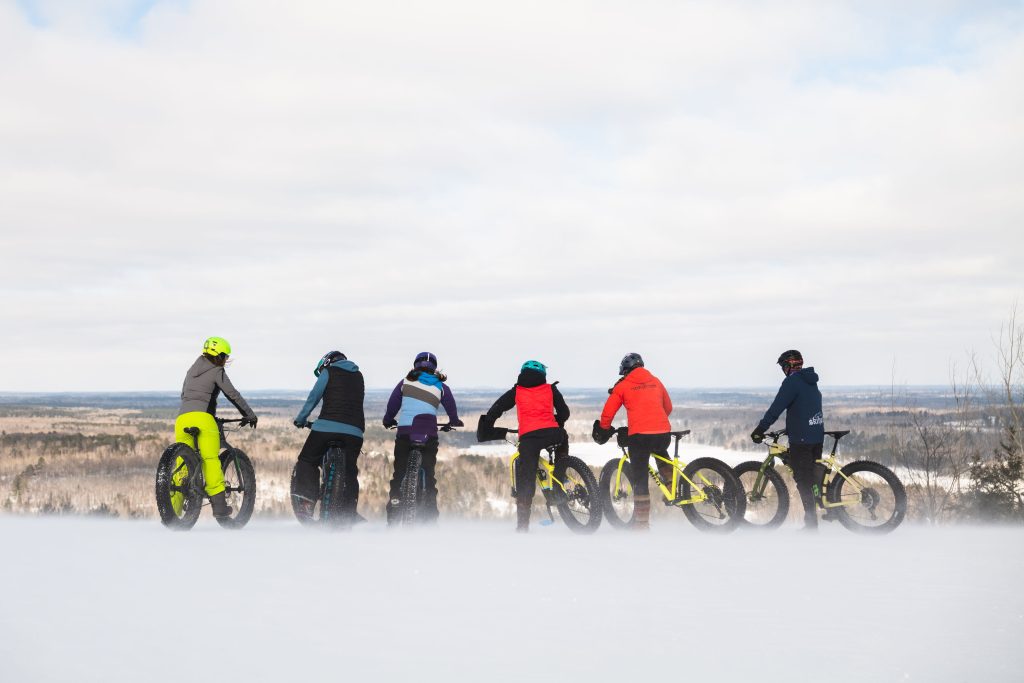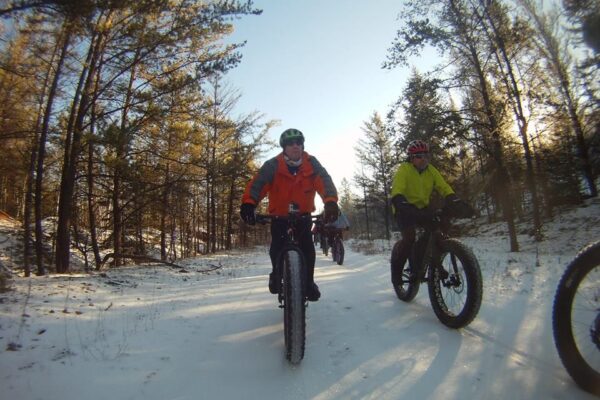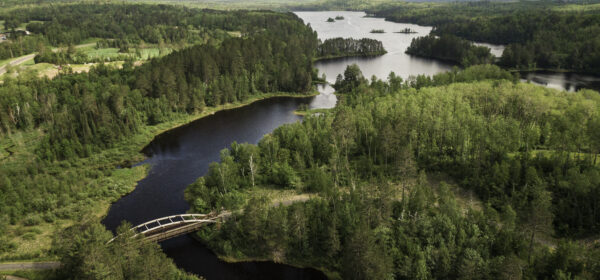Winter Fat Biking in Minnesota’s Iron Range: A Complete Guide
As the snow blankets the Iron Range, a new adventure awaits for those willing to embrace the chill. Fat biking, once a niche winter activity, has exploded in popularity. It’s transformed the region into a year-round cycling destination. The Iron Range offers an unparalleled fat biking experience with its vast network of groomed trails and stunning landscapes. You’ll be grinning from ear to frost-nipped ear by the end of your ride.
Let’s explore some of the best fat bike trails in the Iron Range, as well as key tips for getting started with the sport.
Why Fat Biking?
Fat biking is like riding a monster truck on two wheels through a winter wonderland. The oversized fat tires, typically 3.8 inches or wider, provide excellent flotation and traction on snow-covered trails. This unique design allows cyclists to explore terrain that would be impassable on a regular mountain bike.
Where to Ride
The Iron Range’s diverse landscape, from abandoned mine pits to dense boreal forests, creates a fat biking playground unlike any other. Whether you’re a seasoned cyclist or a winter sports enthusiast looking for a new thrill, fat biking offers a fresh perspective on familiar trails and opens up new areas to explore. Here are some of the best trails to explore.
Giants Ridge Resort: A Fat Biking Paradise
Giants Ridge Resort in Biwabik is the crown jewel of Iron Range fat biking. With over 60 kilometers of groomed cross-country trails, it’s a fat biker’s dream come true. The resort even allows winter fat bike riding on its downhill slopes, accessed by high-speed lifts – a rare treat for gravity-loving riders.
As you pedal through the boreal forests and over gentle hills, keep your eyes peeled for wildlife. It’s not uncommon to spot deer, owls, or even a mink along the trails. The serenity of the winter landscape, punctuated only by the soft crunch of snow beneath your tires, creates a truly magical experience.
For those new to off-road cycling, check out our tips for beginner mountain bikers before hitting the trails.
Redhead Mountain Bike Park: Year-Round Riding
Redhead Mountain Bike Park has quickly become a premier destination for winter biking adventures. Built on abandoned mine lands, this park offers miles of groomed trails with breathtaking views and challenging elevation changes. The unique terrain provides an exciting mix of flowy descents and punchy climbs that will test your winter riding skills.
Mesabi Trail: A Fat Biking Highway
For those looking for a longer adventure, the Mesabi Trail offers 162 miles of paved path, parts of which are groomed for winter fat biking. A popular five-mile stretch between Chisholm and Buhl is particularly well-maintained, with food and lodging options at either end.
If you’re looking for more scenic rides, explore our guide to scenic bike trails in the Iron Range.
Superior National Forest: Backcountry Exploration
For a true backcountry experience, venture into the Superior National Forest. The forest roads north of Chisholm, particularly in the Dark Lake/Shannon River area, offer endless opportunities for exploration. Contact the local tourism office for maps and trail information.

Getting Started with Fat Biking
Thinking about joining the fat bike community in the Iron Range? Get ready to hit those snowy trails with these essential tips.
Gear Up
The right gear is your arsenal, making every ride safer and more enjoyable. To fully enjoy fat biking, we recommend the following equipment:
- Fat Bike: Look for a bicycle with tires at least 3.8 inches wide. Many local bike shops offer rentals if you want to try before you buy.
- Winter Cycling Clothes: Layering is key. Start with a moisture-wicking base layer, add an insulating mid-layer, and top it off with a windproof outer shell.
- Pogies: These handlebar mitts provide extra warmth for your hands without sacrificing dexterity.
- Sturdy Winter Boots: Regular cycling shoes won’t cut it in deep snow. Opt for insulated winter boots designed for flat pedals.
- Lights: Winter days are short, so be prepared with both front and rear lights.
Riding Tips
From balance to braking, these riding tips will help you improve your technique and adapt to the snowy conditions of the Iron Range.
- Lower Your Tire Pressure: For better grip on snow, run your tires at very low pressure, typically between 4-8 PSI.
- Stay Seated on Climbs: To maintain traction on snowy ascents, keep your weight centered over the rear wheel.
- Lean into Turns: Fat bikes can be prone to washing out in corners. Lean the bike more than your body to maintain control.
- Be Prepared: Carry basic tools, a spare tube, and snacks. Winter riding burns more calories than you might expect.
Events and Community
The Iron Range fat biking community is active and welcoming. Look out for events like the annual Pie-Burner Fat Bike Ride in Hibbing, held the day after Thanksgiving. Entry is a toy donation for the local Toys For Tots program – a great way to give back while enjoying the trails.
Ready to Ride?
Fat biking in Minnesota’s Iron Range is more than just a way to stay active during the long winter months – it’s a chance to see familiar landscapes in a new light and challenge yourself in ways you never thought possible. As you float over freshly groomed trails or carve through untouched powder, you’ll understand why fat biking has captured the hearts of so many winter enthusiasts.
So don’t let the snow keep you indoors this winter. Grab a, bundle up, and discover the joy of winter cycling in the Iron Range. Who knows? You might find that fat biking, and not skiing, becomes your new favorite way to embrace the Minnesota winter.
Looking for more cycling adventures? Check out our guide to Minnesota mountain bike trails for warm-weather riding options.





